Janet Delaney is a fine art photographer whose work focuses on urban issues. She is currently documenting the rapid transformation of the SoMa district of San Francisco. This area was the subject of her earlier project, South of Market 1978-1986. Delaney has received three National Endowment for the Arts Grants and the Phelan Award. Her photographs are in collections such as the San Francisco Museum of Art, the de Young Museum, and the Pilara Foundation among others. Her work has been shown both nationally and internationally. In late 2013 She published South of Market with Mack of London. This series was exhibited in a one-person show at the de Young Museum in San Francisco, in 2015. For fifteen years she held the position of adjunct lecturer at the University of California, Berkeley and in 2015 she taught in the undergraduate and graduate programs at the San Francisco Art Institute. Today we share Janet’s series titled South of the Market.
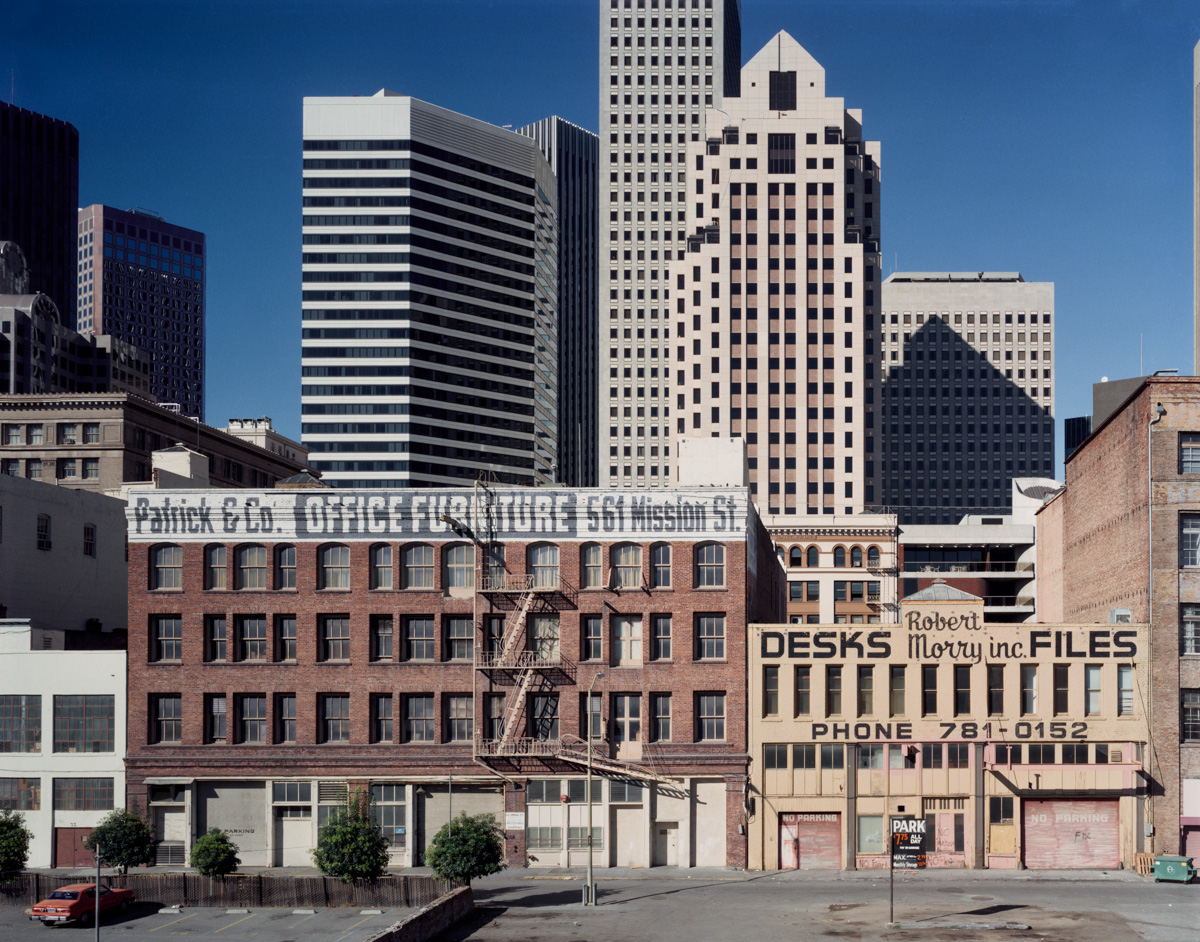
View of the Financial District from south of Market Street, 1980
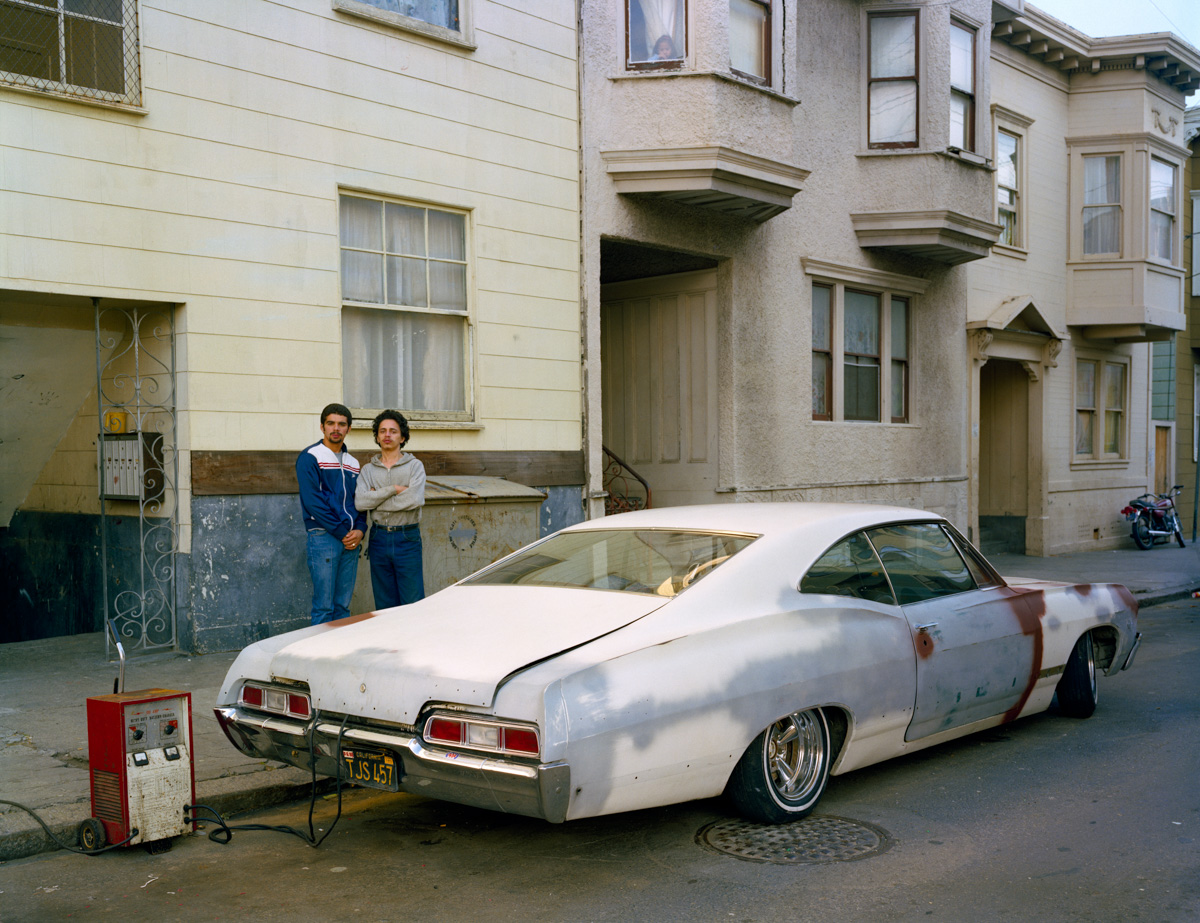
Charging battery, Moss Street, 1982

Bobbie Washington and her daughter Ayana, 28 Langton Street, 1982
South of Market 1978-1986
“These photographs were taken at the cusp of a remarkable transformation. Part of the South of Market District of San Francisco had been altered structurally: 4000 residents and 700 businesses had been displaced to make room for the new convention center. An even larger part of the transformation of South of Market would be the restructuring of the use of existing space. As light industry moved out, artists moved into the warehouses. As families with children migrated to the suburbs, the gay community moved into the wood framed apartments that lined the alleyways. Urban flight in the 1950s was in motion across the country. In response to this exodus redevelopment projects became a common sight in abandoned and blighted inner city neighborhoods during the 1960s and 1970s.
I moved to the South of Market in 1978, as the first posts were being poured for the the Moscone Convention Center. I began to ask who had lived and worked in this ten-block area that had been clear-cut and was now a massive hole in the ground? How would this new development affect the lives of my neighbors who had lived in this working class district for generations? These photographs and the accompanying interviews were my way of giving a voice to those who remained at the edges of the site, but were about to be immeasurably impacted by rising rents brought on by the arrival of the conventioneers.”
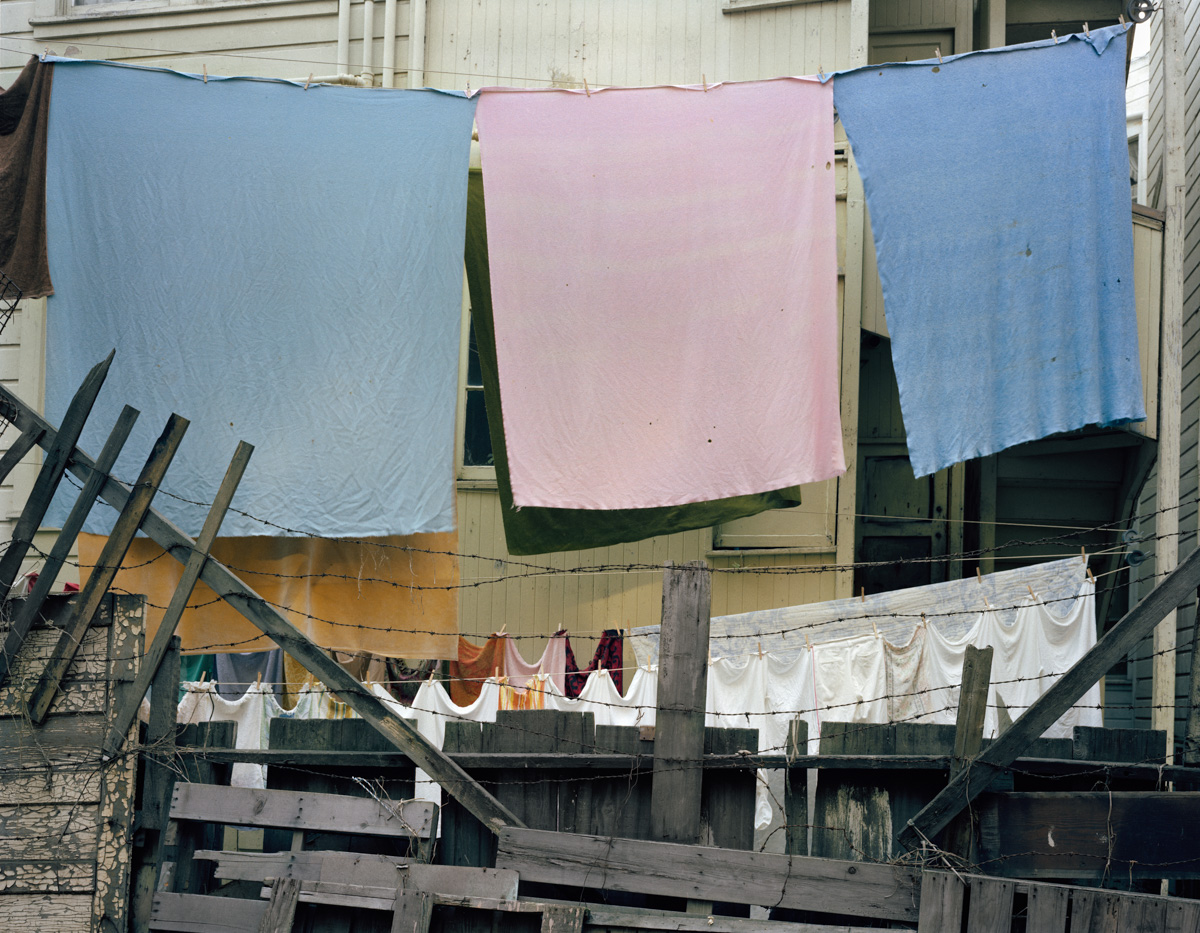
Russ Street Apartments, 1981
Hello Janet! Can you start by telling us how this series began? When did you first move to California?
I first moved to San Francisco from the Los Angeles area in 1971. I came here to go to college and more importantly, I came here because at that moment in time San Francisco was a Mecca for Peace and Love. The counterculture was blooming, the music was free and the civil rights and antiwar movements were in full force.
A few years after graduating from San Francisco State University I ended up in the South of Market District. This sunny side of town was a working class neighborhood that was gradually losing ground. As the light industry moved out artists began to take over the abandoned warehouses for live-work space. I moved into an apartment on Langton Street and set up my darkroom in the bedroom. I was photographing construction sites at the time. I discovered the nearby Moscone Convention Center site and then began to consider how this new building would impact my neighbors.
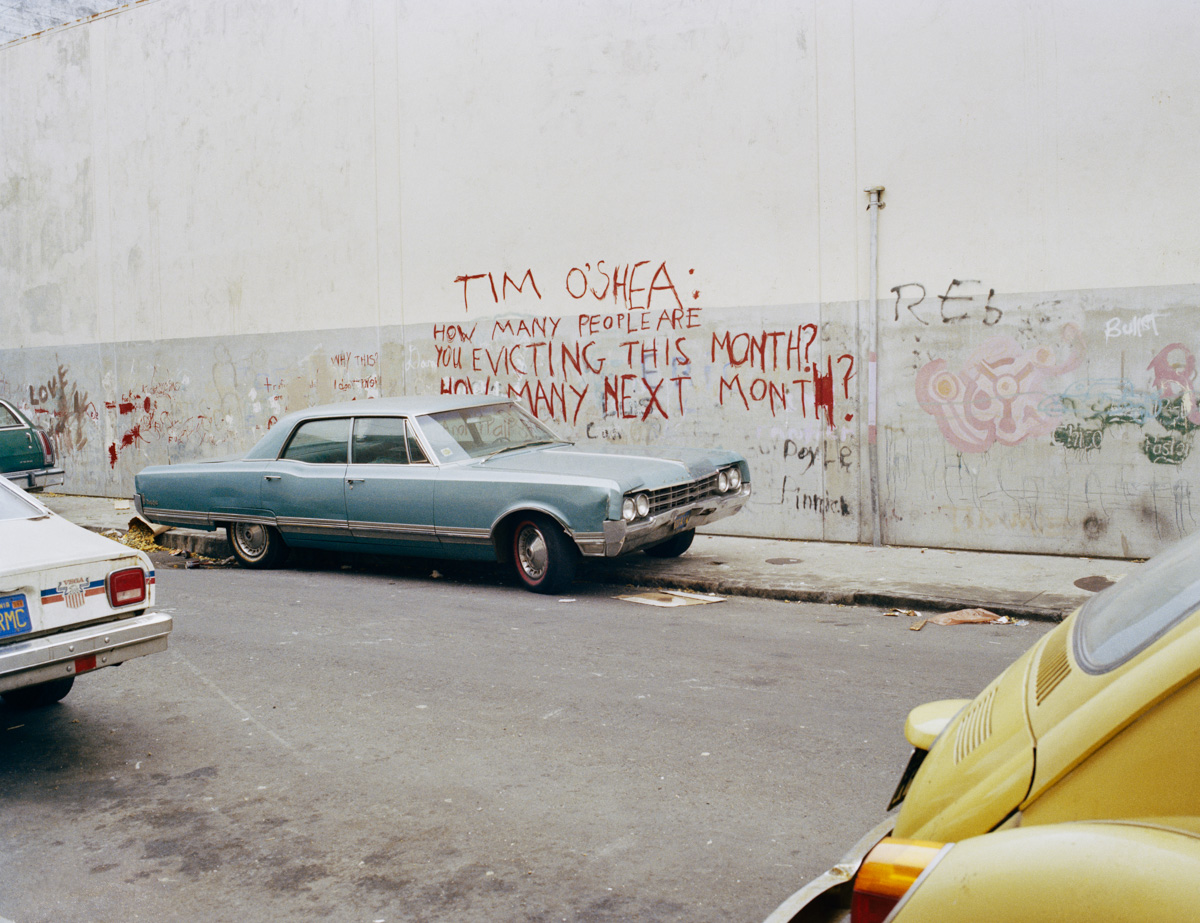
Langton between Folsom and Harrison Streets, 1979

Helen and her husband Chester, at the Helen Café, 486 6th Street
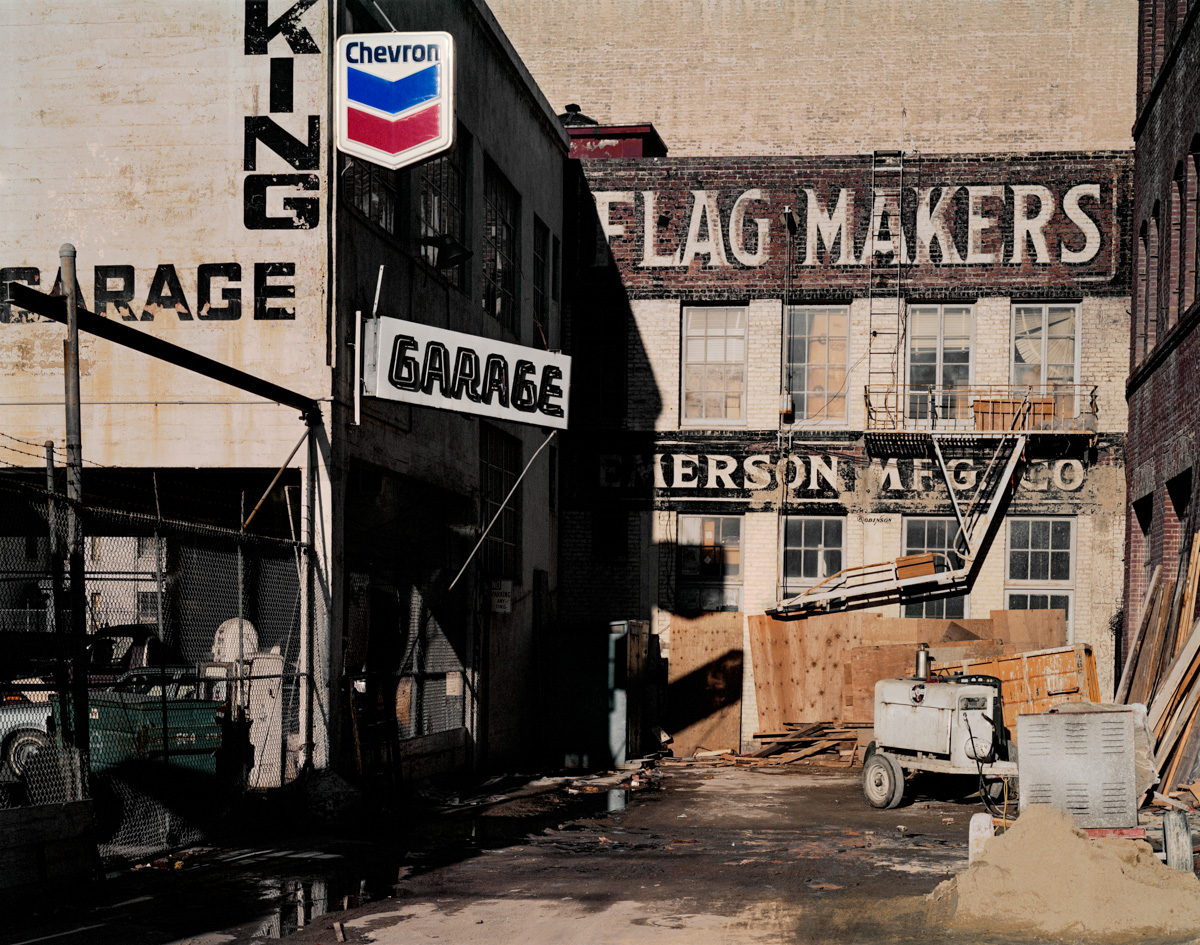
Flag Makers, Natoma at 3rd Street, 1982
Are the portraits of people from mostly one-time occurrences or did you know any of them personally?
In some cases I walked in to businesses, introduced myself and made a photograph. People were open and happy to make time for me. In other cases I knew the people I photographed because we were neighbors and saw one another regularly on our little Langton Street alley.
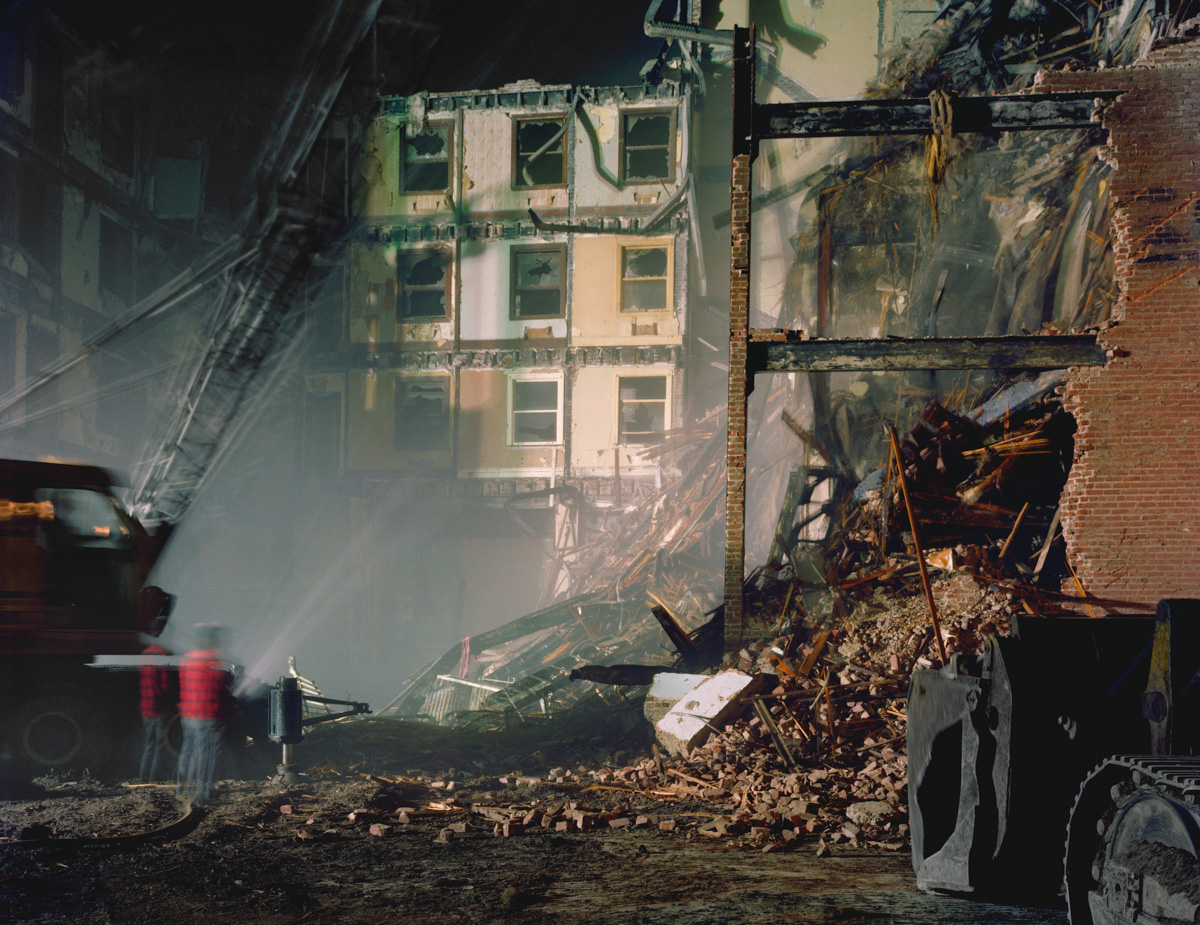
Night Deomolition of the Imperial Hotel, 4th at Minna Street, 1978
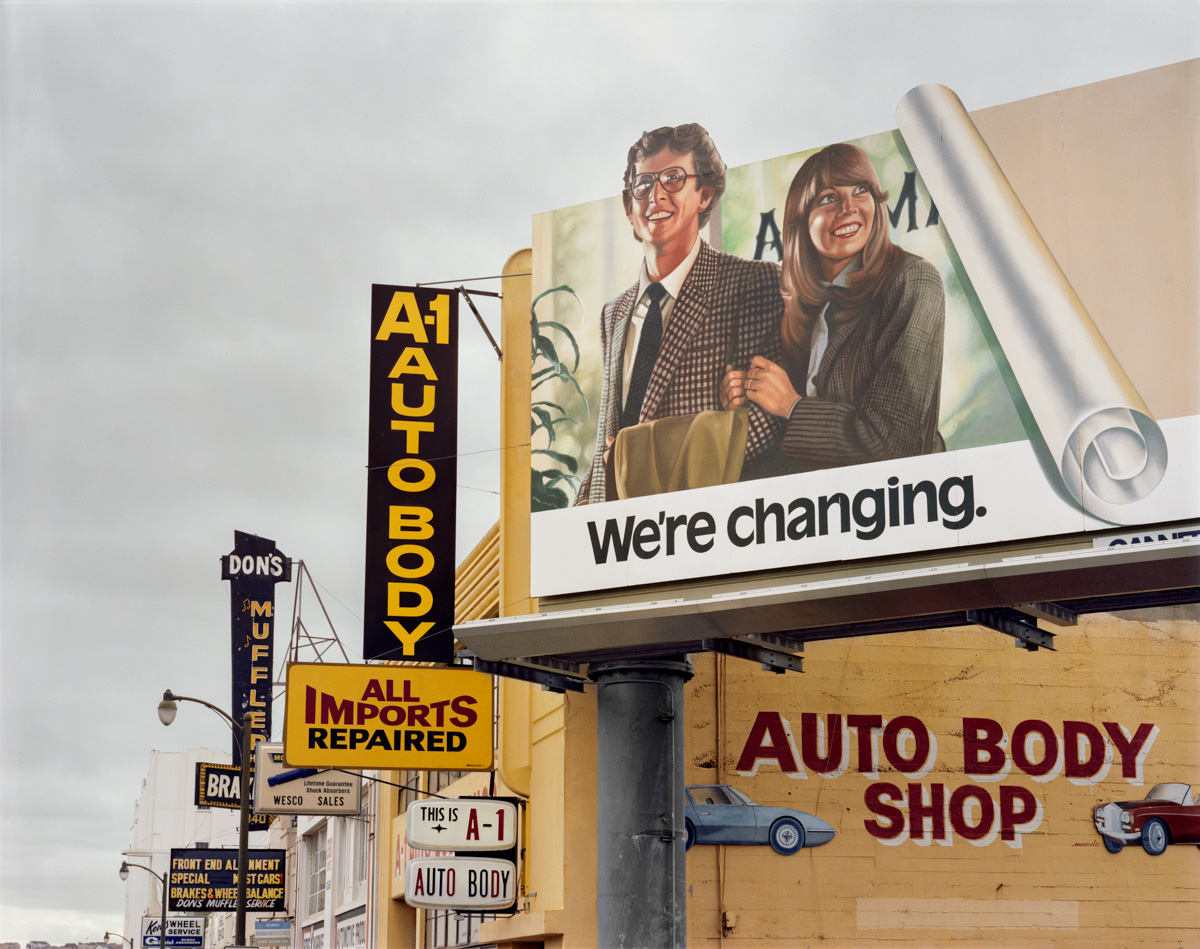
10th at Folsom Street, 1982
Can you explain what it felt like seeing friends or loved ones forced to leave their homes?
A neighborhood is a very fragile thing. It is built on trust and openness among strangers whose only bond is often just a shared street address and a willingness to look out for one another. When people have to move against their will there is a break in the social fabric. During the late 1970s when I first came to the South of Market neighborhood, evictions and arson fires were common. There was a general unease and a sense that we could be displaced at any time. I had a great landlord, but others were not as fortunate. The nearby Mission District is now experiencing exploitative rent increases and an increase in arson fires meant to clear people out of long established housing. When a neighborhood is being targeted for gentrification it begins to lose its mooring. Those who own property do well, but they often lose the familiarity of their long time community.
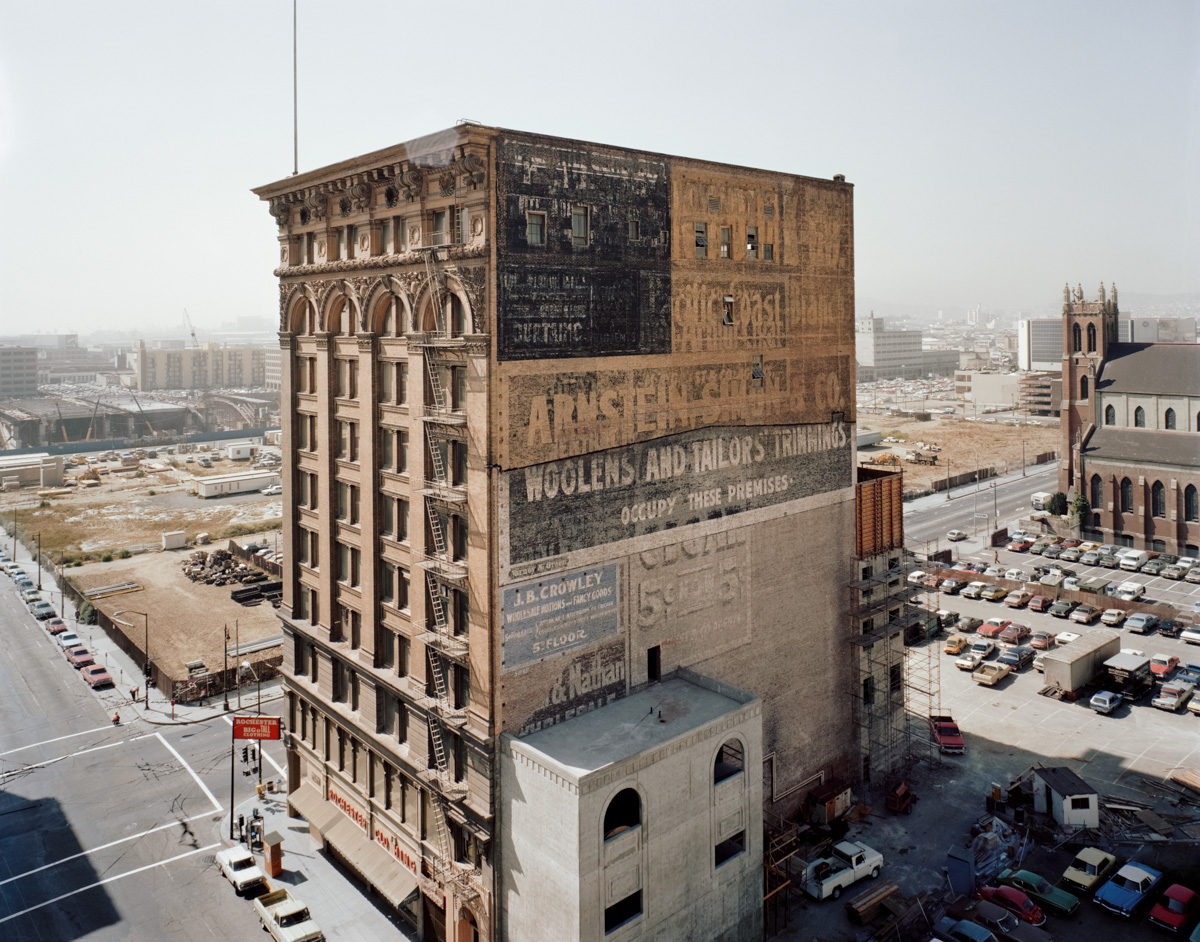
Mercantile Building, Mission and 3rd Streets, 1980
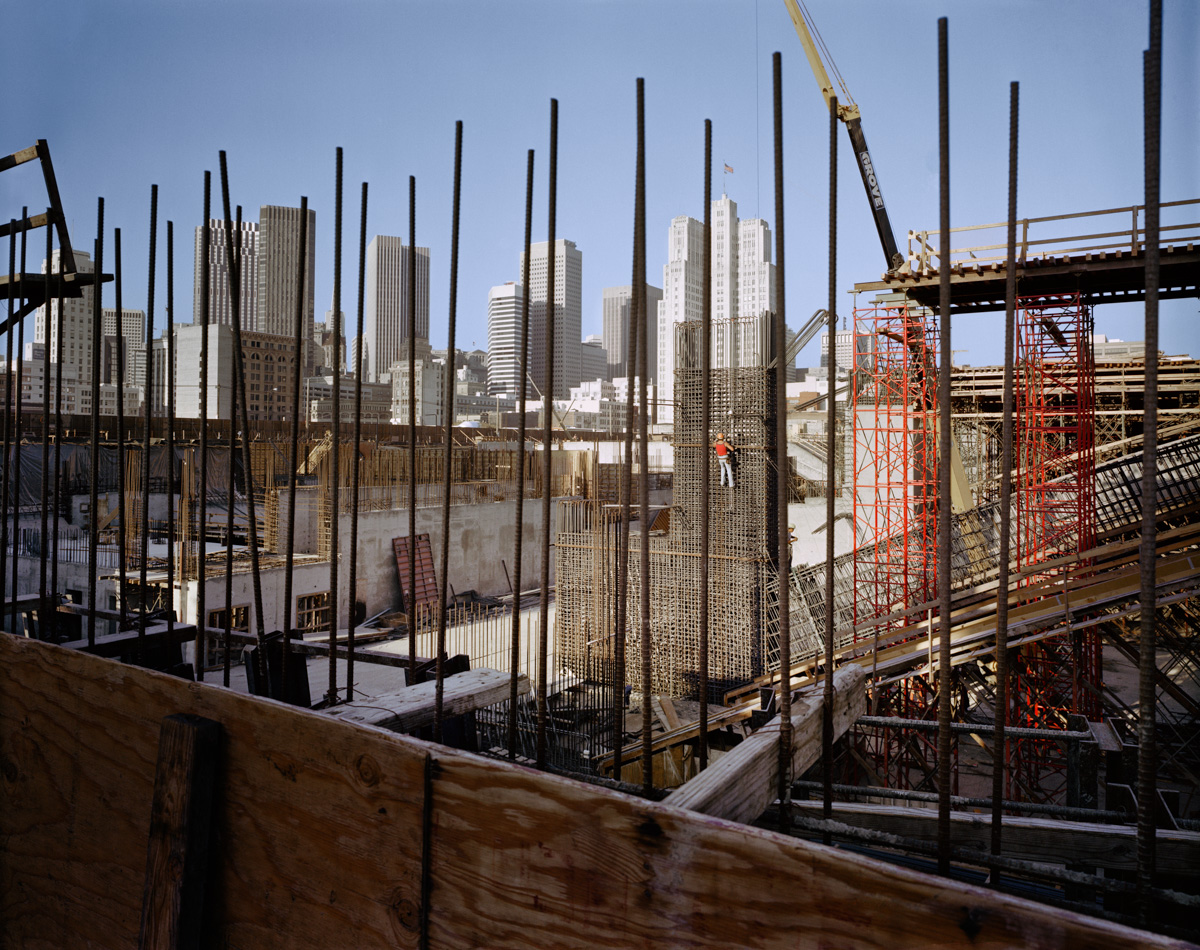
Moscone Center under construction, 1980
Can you share any significant story or experience you had photographing this body of work?
There are many small incidents that make up the whole of the experience. What I valued the most was the sense of intimacy I had with the place. I took time to meet my neighbors, photograph and interview them, then take the images back to them and invite them to see the audio visual piece I made based on the material I had gathered. This effort created a strong bond between all of us. I can honestly say I was in love with my neighborhood. I cared deeply about the people and the place. When I showed the work almost 30 years later, at the deYoung Museum in Golden Gate Park, I was overwhelmed by the emotional response people had to seeing their seemingly unremarkable part of town up on the walls of such a venerable institution.
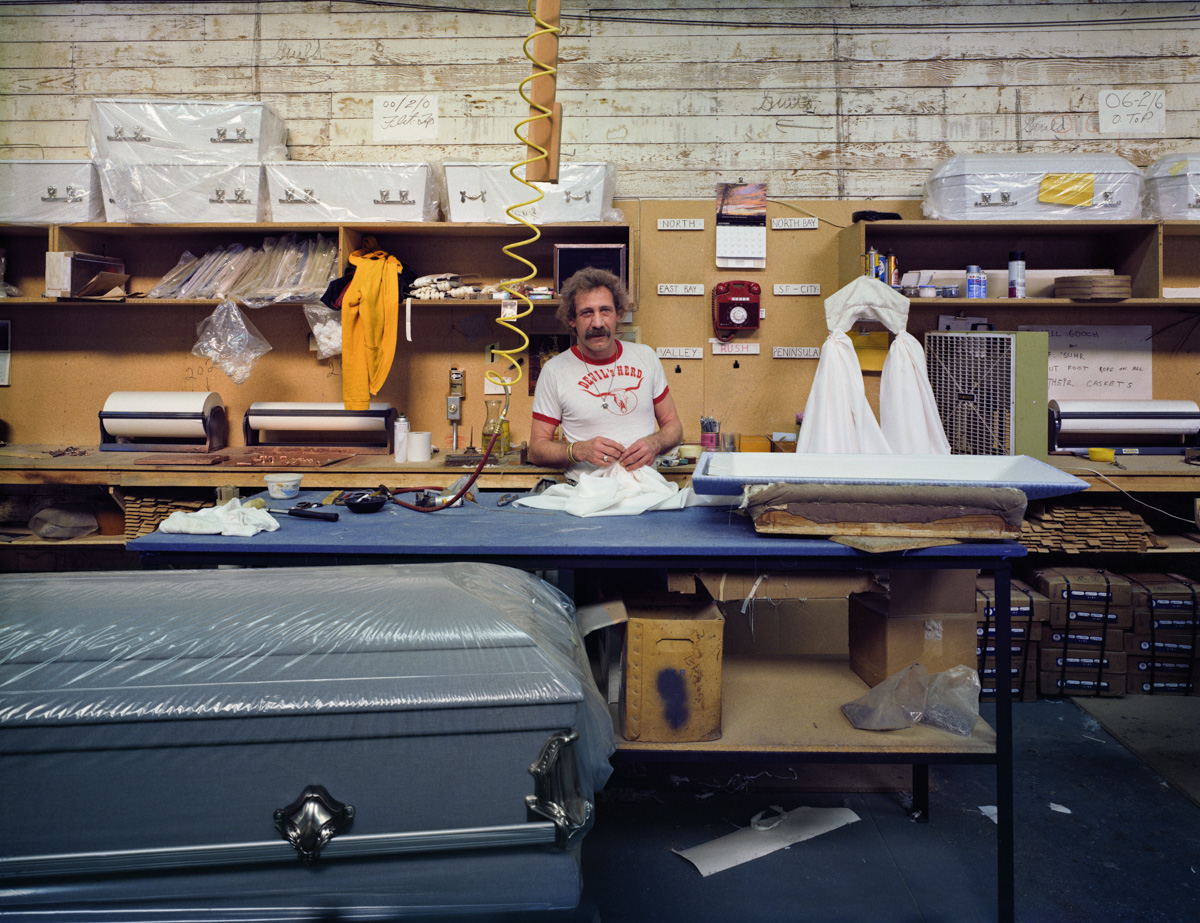
Harry Smith, Bay Casket Company, 1020 Folsom Street , 1980
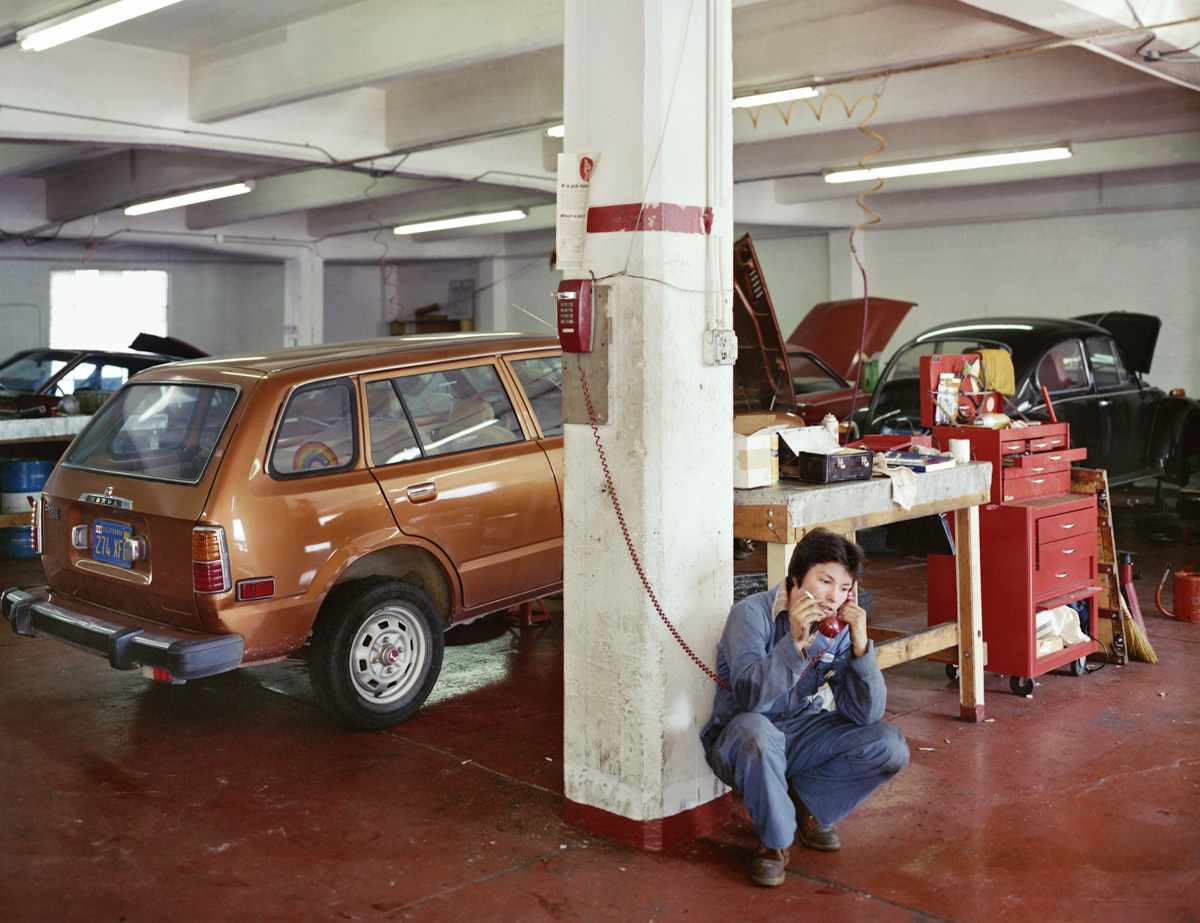
Labyris Auto Repair, Complete Car Care By Women, 240 6th Street, 1982
How is that part of the city different today compared to that point in time?
There was once a thriving Irish, Filipino and African American community living here. There were also numerous residential hotels for factory and ship workers. All that changed in the 1970s and early 80s, when redevelopment cleared out the homes of more than 4000 people and 700 businesses to make way for a new convention center which opened in 1981. Now the area is packed full of high-rises, museums and expensive restaurants with scant area for the original tenants. They have been relocated to the outlying neighborhoods of the Bayview or even Vallejo. Commuting into the city for work has become more and more arduous.
I am photographing again in this area. I feel that this part of town represents the future of big cities. There is a great deal of excitement about the burgeoning tech industry, all the conversations I hear while I am photographing swirl around the hope of the next big tech breakthrough. It is great to see bike lanes and cactus in all the coffee shops, but now the sidewalk offers a tense mix of the very poor and the very wealthy. I am hopeful only because San Francisco has always been at the forefront of social issues. The concern is whether those who fight for these rights will be able to hold onto their piece of the neighborhood long enough to make their voices heard. I had to move away, not far, but I no longer can afford to live in the City.
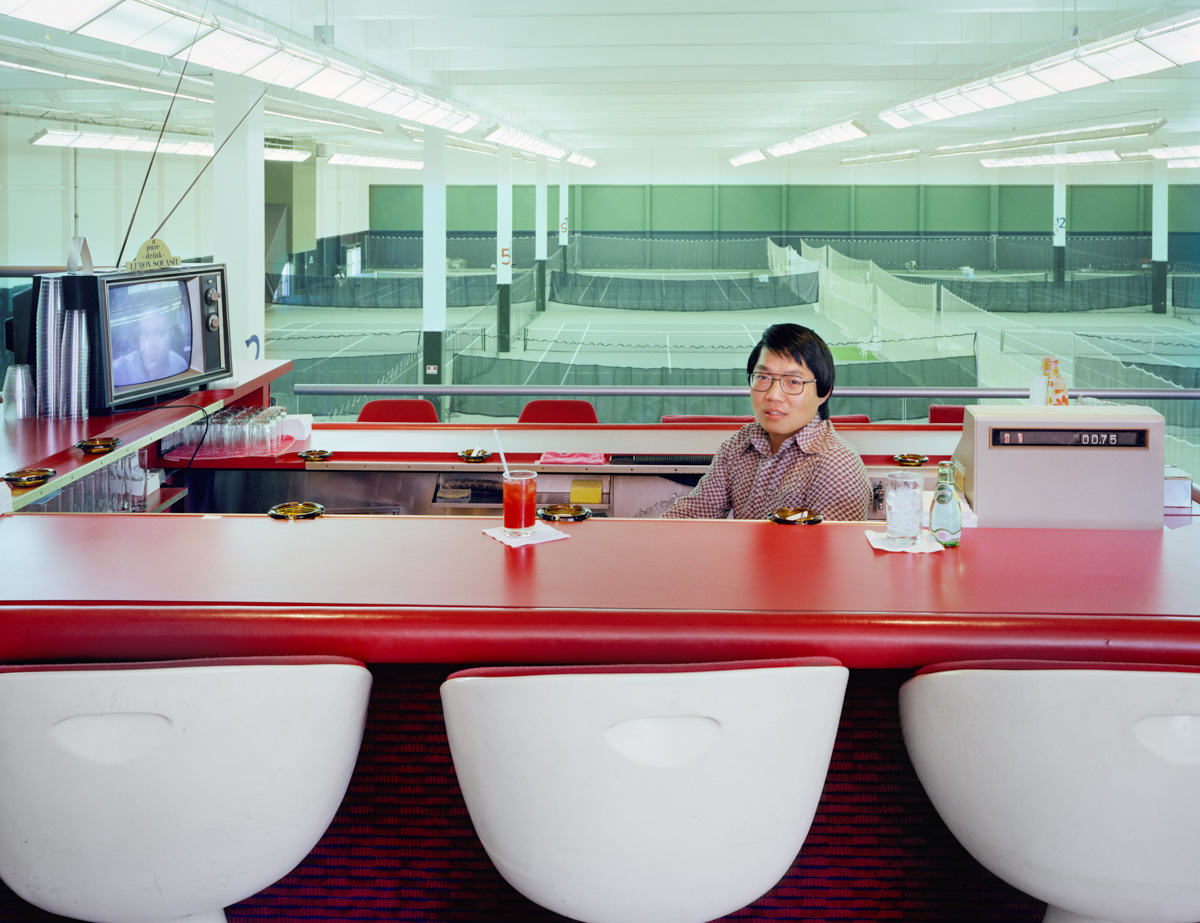
San Francisco Tennis Club Bar, 645 5th Street, 1980
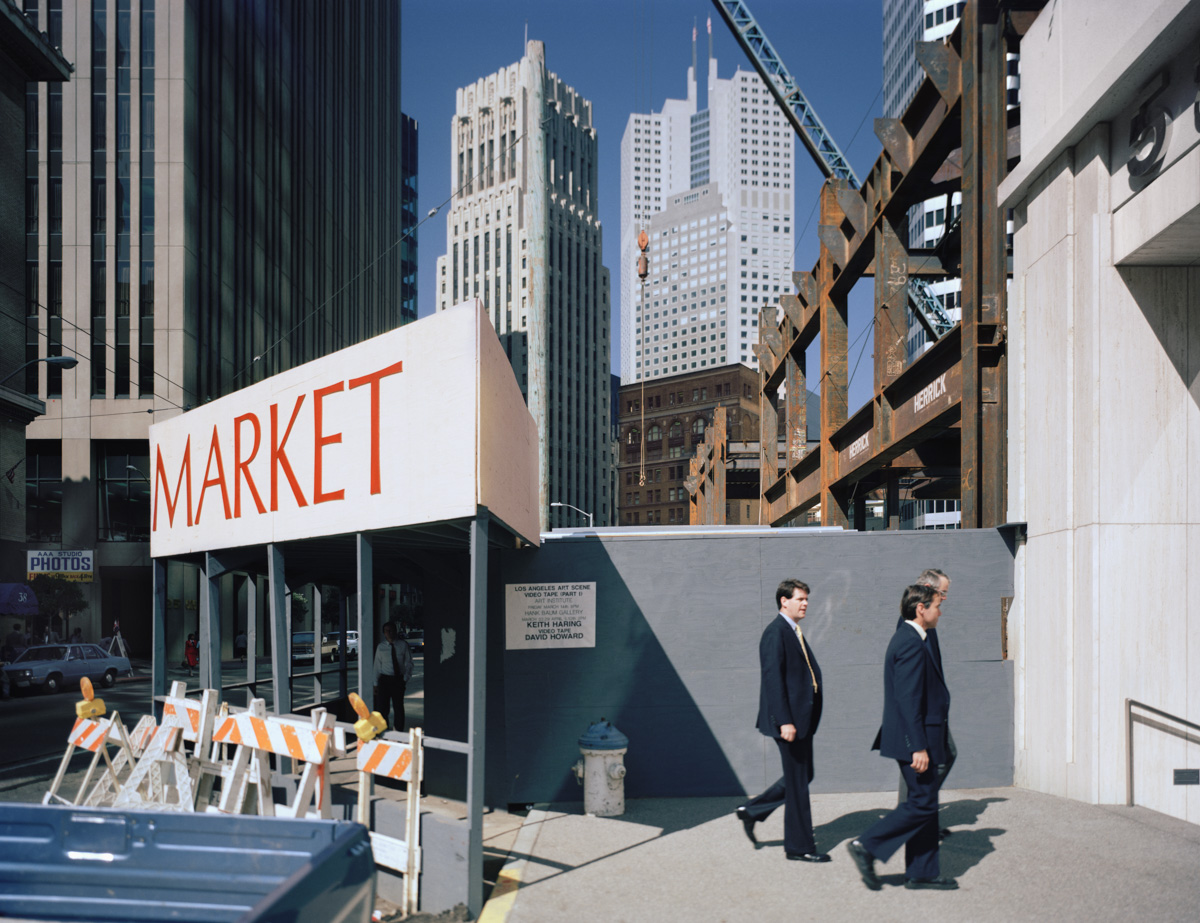
2nd at Market Street, 1986
To view more of Janet’s work please visit her website.